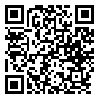Volume 23, Issue 2 (June 2025)
Iranian Rehabilitation Journal 2025, 23(2): 217-232 |
Back to browse issues page
Download citation:
BibTeX | RIS | EndNote | Medlars | ProCite | Reference Manager | RefWorks
Send citation to:



BibTeX | RIS | EndNote | Medlars | ProCite | Reference Manager | RefWorks
Send citation to:
Acquadro Maran D, Varetto A, Begotti T, Rizzo A, Yıldırım M, Batra K, et al . Consequences and Coping Strategies Among Students and Workers Experiencing Stalking. Iranian Rehabilitation Journal 2025; 23 (2) :217-232
URL: http://irj.uswr.ac.ir/article-1-2458-en.html
URL: http://irj.uswr.ac.ir/article-1-2458-en.html
Daniela Acquadro Maran *1 

 , Antonella Varetto2
, Antonella Varetto2 

 , Tatiana Begotti1
, Tatiana Begotti1 

 , Amelia Rizzo3
, Amelia Rizzo3 

 , Murat Yıldırım4
, Murat Yıldırım4 

 , Kavita Batra5
, Kavita Batra5 

 , Hicham Khabbache6
, Hicham Khabbache6 

 , Francesco Chirico7
, Francesco Chirico7 




 , Antonella Varetto2
, Antonella Varetto2 

 , Tatiana Begotti1
, Tatiana Begotti1 

 , Amelia Rizzo3
, Amelia Rizzo3 

 , Murat Yıldırım4
, Murat Yıldırım4 

 , Kavita Batra5
, Kavita Batra5 

 , Hicham Khabbache6
, Hicham Khabbache6 

 , Francesco Chirico7
, Francesco Chirico7 


1- Department of Psychology, University of Torino, Torino, Italy.
2- City of Science and Health, Turin, Italy.
3- Department of Clinical and Experimental Medicine, University of Messina, Messina, Italy.
4- Department of Psychology, Faculty of Science and Letters, Agri Ibrahim Cecen University, Ağrı, Turkey. & Psychology Research Center, Khazar University, Baku, Azerbaijan.
5- Department of Medical Education, Kirk Kerkorian School of Medicine at UNLV, University of Nevada, Las Vegas, United States.
6- Department of Psychology, Faculty of Arts and Human Sciences Fès-Saïss, Sidi Mohamed Ben Abdellah University, Fes, Morocco. & Director of the Unesco Chair, Lifelong Learning Observatory, Hamburg, Germany.
7- Post-graduate School in Occupational Health, Catholic University of the Sacred Heart, Rome, Italy.
2- City of Science and Health, Turin, Italy.
3- Department of Clinical and Experimental Medicine, University of Messina, Messina, Italy.
4- Department of Psychology, Faculty of Science and Letters, Agri Ibrahim Cecen University, Ağrı, Turkey. & Psychology Research Center, Khazar University, Baku, Azerbaijan.
5- Department of Medical Education, Kirk Kerkorian School of Medicine at UNLV, University of Nevada, Las Vegas, United States.
6- Department of Psychology, Faculty of Arts and Human Sciences Fès-Saïss, Sidi Mohamed Ben Abdellah University, Fes, Morocco. & Director of the Unesco Chair, Lifelong Learning Observatory, Hamburg, Germany.
7- Post-graduate School in Occupational Health, Catholic University of the Sacred Heart, Rome, Italy.
Abstract: (2092 Views)
Objectives: This study aimed to compare the experience of stalking victimization among students and workers, considering the prevalence of the phenomenon, physical and emotional consequences, and coping strategies
Methods: A total of 291 students (51.9%) and 270 workers (48.1%) who were victims of stalking completed an anonymous questionnaire.
Results: The results showed that the reported behaviors were consistent with a higher percentage of workers experiencing mediated and interactive contact, harassment, and physical violence. Students also reported more physical and emotional symptoms than workers, with some significant differences (loss/increase of appetite, nausea, self-inflicted injuries, panic attacks, suicidal thoughts, sadness, confusion, lack of trust in others, aggressiveness, paranoia, irritability, and agoraphobia). Moreover, interactive contact was associated with physical and emotional symptoms in students, while in workers, the same behavior was only associated with emotional symptoms. Regarding coping strategies, results showed that students were more likely to report increased social contact.
Discussion: This research can guide intervention and prevention strategies, such as promoting educational campaigns for bystanders rather than only for victims.
Methods: A total of 291 students (51.9%) and 270 workers (48.1%) who were victims of stalking completed an anonymous questionnaire.
Results: The results showed that the reported behaviors were consistent with a higher percentage of workers experiencing mediated and interactive contact, harassment, and physical violence. Students also reported more physical and emotional symptoms than workers, with some significant differences (loss/increase of appetite, nausea, self-inflicted injuries, panic attacks, suicidal thoughts, sadness, confusion, lack of trust in others, aggressiveness, paranoia, irritability, and agoraphobia). Moreover, interactive contact was associated with physical and emotional symptoms in students, while in workers, the same behavior was only associated with emotional symptoms. Regarding coping strategies, results showed that students were more likely to report increased social contact.
Discussion: This research can guide intervention and prevention strategies, such as promoting educational campaigns for bystanders rather than only for victims.
Article type: Original Research Articles |
Subject:
Social Welfare
Received: 2025/01/21 | Accepted: 2025/04/19 | Published: 2025/06/1
Received: 2025/01/21 | Accepted: 2025/04/19 | Published: 2025/06/1
Send email to the article author





